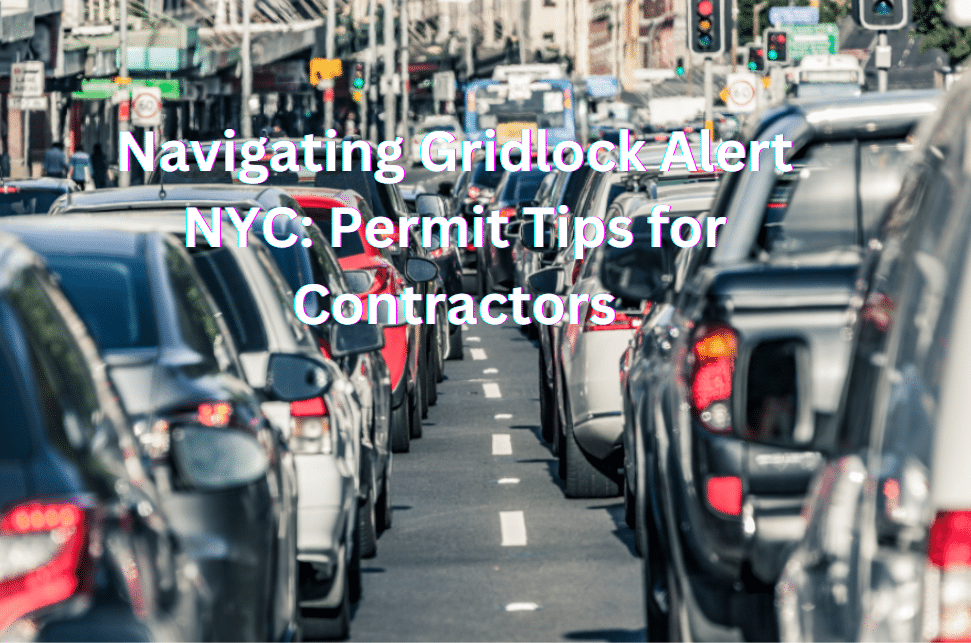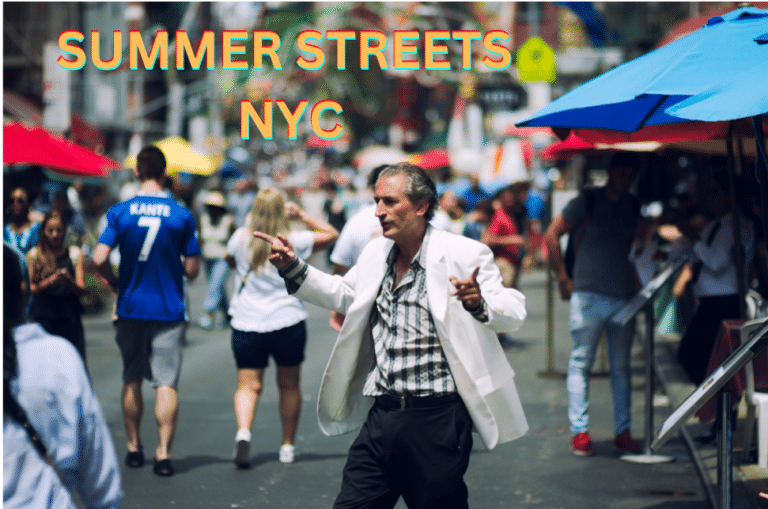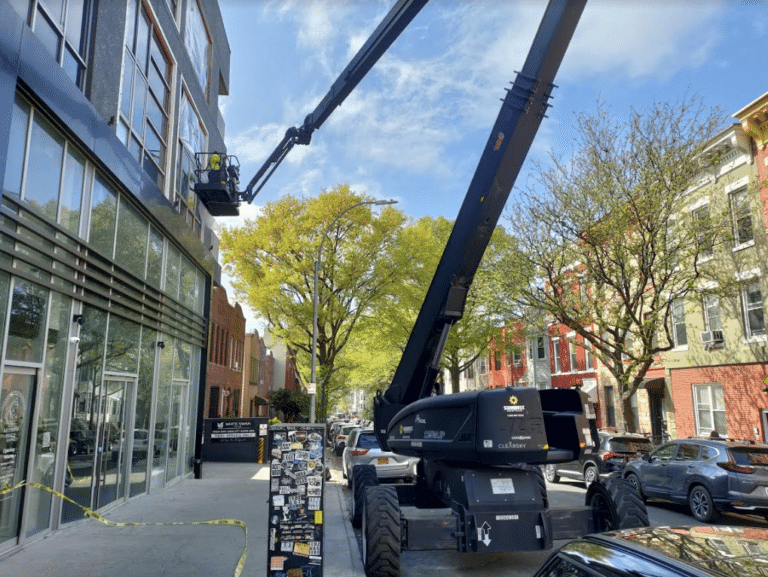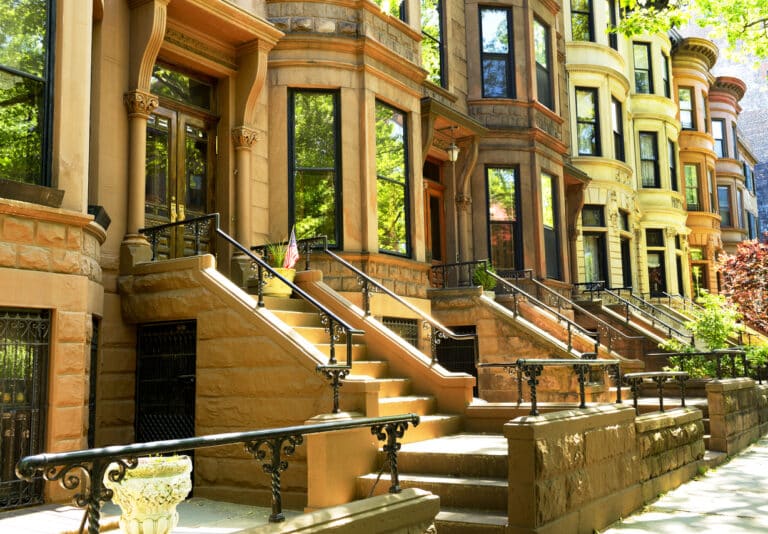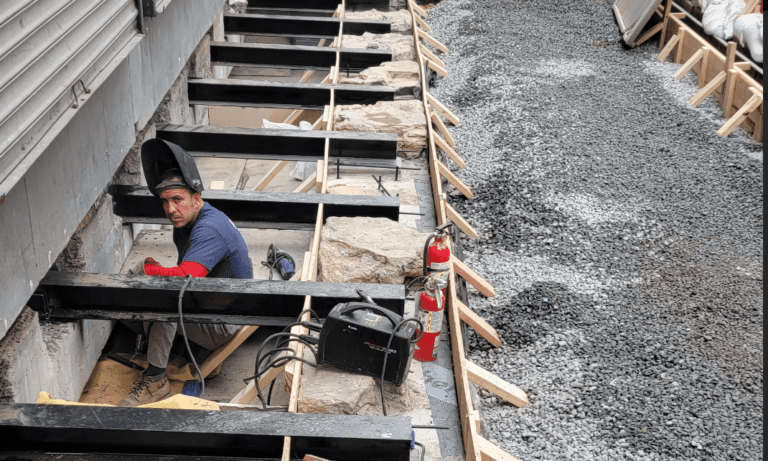Last Updated on January 23, 2025 by Jeffrey Calderon

Navigating Gridlock Alert NYC: Permit Tips for Contractors
Gridlock alert days in New York City are crucial for homeowners and contractors to be aware of when planning construction projects or events. These alerts aim to mitigate the congestion on busy city streets, which can significantly impact various permit applications and approvals.
In this blog post, we will delve into the different types of permits that may be affected by gridlock alert days in NYC.
We will discuss construction permits, street use permits, special event permits, film and photography permits, as well as how gridlock alerts influence these processes.
By understanding the implications of gridlock alert days on your project or event plans, you can ensure a smoother experience navigating New York City’s complex permitting system.
Table of Contents:
- Construction Permits
- Street Use Permits
- Special Event Permits
- Film and Photography Permits
- Gridlock Alerts
- FAQs in Relation to Gridlock Alert Nyc
- Conclusion
Construction Permits
Planning a construction project in NYC? To ensure safety and stay compliant with NYC building codes, it is important to be aware of the different construction permits required by the DOB. Let’s dive into some common types of construction permits and their requirements.
New Building Permit
Constructing a new structure or making significant changes to an existing one? You need a new building permit. This includes adding stories, enlarging the footprint, or changing its use. To obtain a new building permit, you must submit detailed plans prepared by a registered architect or professional engineer along with other supporting documents.
Alteration Type 1 Permit
Major alterations to an existing structure that affect its use, egress, or occupancy classification require an alteration type 1 permit. Examples include converting a residential building into commercial space or vice versa. You’ll need to provide detailed plans and documentation prepared by licensed professionals.
Alteration Type 2 Permit
Minor alterations that don’t change the use, egress, or occupancy classification but still require DOB approval due to potential impacts on public safety and compliance with city regulations need an alteration type 2 permit. Examples include installing fire sprinklers in an office space without changing its layout significantly.
Filing Representative Registration & Limited Alteration Application (LAA)
- Filing Representative Registration: Contractors who frequently file applications with DOB can register as filing representatives for faster processing of permits. This registration allows them to submit applications on behalf of the property owner or project applicant.
- Limited Alteration Application (LAA): For minor alterations that don’t require a full plan review, such as plumbing work or replacing fixtures, an LAA can be submitted instead of a standard permit application. LAAs are typically processed more quickly than other types of permits.
Other specialized permits may be required for specific projects, such as sidewalk sheds and scaffolding. Consult with your design specialist to identify the permits needed for your project and make sure you adhere to NYC rules.
If you’re planning a construction project in NYC, it’s important to know about the various permits required by the Department of Buildings. Some common types include new building permits for significant changes or additions, alteration type 1 permits for major alterations affecting use and occupancy classification, and alteration type 2 permits for minor alterations that still require DOB approval. Additionally, filing representative registration can speed up processing times and limited alteration applications are available for minor work like plumbing or fixture replacements.
Street Use Permits
You need to know about street use permits. These permits ensure your activities don’t mess with traffic flow or pedestrian safety. Let’s dive into the different types of street use permits and how to apply for them.
Construction-Related Street Use Permits
The NYC DOT requires a construction-related street use permit if your project necessitates any work on streets, sidewalks, or curbs. Some common examples include:
- Excavation Permit: Required when digging into the roadway or sidewalk surface.
- Sidewalk Shed Permit: Necessary when erecting temporary structures like scaffolding around buildings under construction.
- Curb Cut Permit: Needed if creating new driveway access points onto public streets.
Non-Construction Related Street Use Permits
Aside from construction projects, there are other instances where you may need a non-construction related street use permit. Examples include:
- Vending Permit: For operating food trucks or selling merchandise on city sidewalks.
- Newspaper Box Permit: To place newspaper vending machines along public walkways.
Tips for Applying for Street Use Permits in NYC
- Determine which type of permit you need: Check the NYC DOT website to identify the specific type of street use permit required for your project or activity.
- Gather necessary documentation: Depending on the permit, you may need site plans, insurance certificates, and other relevant documents. Have these ready before applying.
- Submit your application online: Most permits can be applied for through the NYCStreets Permit Management System. Set up an account and adhere to the steps given to hand in your application.
- Pay associated fees: There are often fees associated with obtaining a street use permit. Be prepared to pay these during the application process.
- Await approval from NYC DOT: After submitting your application, it will be reviewed by NYC DOT staff. You may receive additional requests for information or clarification during this time. Once approved, you’ll receive notification and can proceed with your project or event as planned.
By understanding how street use permits work in NYC and following these tips, you’ll be well-prepared when planning any construction projects or events that require them. Stay informed about gridlock alerts in NYC by subscribing to updates from the NYC Gridlock Alert Program.
To ensure your construction project or event in NYC doesn’t disrupt traffic flow, you’ll need a street use permit. These permits are required for excavation, sidewalk sheds, curb cuts and other activities like vending and newspaper box placement. Apply online through the NYCStreets Permit Management System after checking which permit is needed on the DOT website and paying any associated fees.
Special Event Permits
Organizing a special event in New York City can be exciting, but it’s essential to obtain the necessary permits to ensure your event runs smoothly and legally. Let’s discuss what you need to know about obtaining a special event permit in NYC.
Types of Special Events Requiring Permits

New York City is a hub of activity, hosting countless events from street fairs to concerts. Some examples of events that may require a special event permit include:
- Festivals or celebrations on New York City streets
- Sporting events like marathons or bike races
- Demonstrations or rallies with large crowds
- Parades featuring floats, vehicles, or animals
- Filming for movies or television shows on public property (note: separate film permits are also required)
Applying for a Special Event Permit
To apply for a special event permit in NYC, submit an application through the Mayor’s Office of Citywide Event Coordination and Management (OCECM). The process typically involves submitting detailed information about your proposed event at least six months before its scheduled date. For a special event permit application in NYC, the OCECM requires providing contact details of the organizer, a thorough explanation of what is planned to occur, an estimation of participants and a plan outlining how public space will be utilized.
Gridlock Alert Days and Special Events
During gridlock alert days in NYC, it’s crucial to be aware of any potential impact on your special event. To stay informed about gridlock alerts in NYC, subscribe to email notifications from the New York City Department of Transportation (NYC DOT) or follow their social media accounts for real-time updates.
Remember that planning a successful special event in New York City requires careful attention to permitting requirements. By understanding these regulations and staying informed about gridlock alert days, you can ensure a smooth experience for both organizers and attendees alike.
To organize a special event in NYC, it’s essential to obtain the necessary permits. The process involves submitting detailed information about your proposed event at least six months before its scheduled date through OCECM. During gridlock alert days, stay informed about potential impacts on your special event by subscribing to email notifications from NYC DOT or following their social media accounts for real-time updates.
Film and Photography Permits

Planning to shoot a film or take professional photographs in NYC? Don’t forget to obtain the necessary permits before starting your project. Here’s what you need to know:
Types of Permits
There are several types of permits available for film and photography projects in NYC:
- Film Permit: Required for any commercial filming that involves equipment on public property.
- Photography Permit: Necessary for still photography shoots that involve equipment on public property.
- Drones Permit: If you plan to use drones for aerial footage within city limits, you must apply for a separate drone permit through the Federal Aviation Administration (FAA).
How to Apply
To apply for a film or photography permit in NYC, follow these steps:
- Create an account with the Mayor’s Office of Media and Entertainment (MOME) online system called “Permit Application System“.
- Select “Film” or “Photography” from the list of available permits depending on your project type.
- Complete all required fields on your application form, including details about locations and production dates/times.
- Submit any additional required documentation, such as insurance certificates or location agreements.
- Pay the applicable charge and hand in your filled-out permit request. You’ll receive a confirmation email once it’s submitted successfully.
Advise to file the request no less than two weeks before commencement of filming in order to guarantee sufficient time for acquiring the authorization.
Staying Informed about Gridlock Alerts
It’s crucial to stay informed about gridlock alerts in NYC during your production. The DOT issues gridlock alerts when traffic congestion is expected due to special events or construction projects, so staying informed about these updates is essential for production in NYC. To avoid delays and potential disruptions during filming, sign up for Gridlock Alert notifications from DOT via email or text message updates so you can plan accordingly around these high-traffic periods.
If you’re planning to shoot a film or take professional photographs in NYC, make sure to obtain the necessary permits before starting your project. There are several types of permits available for film and photography projects in NYC, including Film Permit, Photography Permit, and Drones Permit. To avoid delays during filming due to traffic congestion caused by special events or construction projects throughout the city, sign up for Gridlock Alert notifications from DOT via email or text message updates so you can plan accordingly around these high-traffic periods.
5. Gridlock Alerts
Gridlock alerts in NYC are a nightmare for drivers, but they don’t have to be for you. Stay informed and stay ahead of the traffic jams with these techniques for dodging gridlock during rush hours.
Stay Updated on Gridlock Alerts
Avoid getting stuck in traffic jams. Stay informed with these reliable sources:
- NYC Department of Transportation (DOT)
- NYCT Subway Twitter Account
- Waze App
- New York State Alert System (NY-Alert)
Tips for Avoiding Heavy Traffic During Gridlock Alerts
Avoid gridlock and stay positive. Follow these tips:
- Use Public Transportation: Skip the traffic and take the subway, bus, or ferry.
- Avoid Peak Travel Times: Schedule your trips outside of peak commuting hours (7-9 AM and 4-6 PM).
- Carpool or Use Rideshare Services: Share the ride and reduce the number of vehicles on the road.
- Plan Alternate Routes: Use navigation apps like Waze to find faster routes based on real-time data.
- Park Strategically: Park at a lot near a subway station outside of the busiest areas and take public transit for the remainder of your trip.
Don’t let the traffic jams impede your progress. Stay informed and plan ahead to avoid the traffic and get where you need to go in NYC.
FAQs in Relation to Gridlock Alert Nyc
What is a Gridlock Alert in NYC?
A Gridlock Alert in NYC is a warning issued by the Department of Transportation (DOT) to inform drivers of expected severe traffic congestion due to holidays, events, or construction.
How does NYC determine a Gridlock Alert?
The DOT determines a Gridlock Alert by analyzing historical traffic data, monitoring real-time traffic conditions, and considering upcoming events that may impact roadways.
What causes a Gridlock Alert in NYC?
A Gridlock Alert in NYC can be caused by holidays, events, adverse weather conditions, or ongoing construction projects that disrupt normal traffic flow.
Common Gridlock Alert Days in NYC:
- New Year’s Day
- Martin Luther King Jr. Day
- Lunar New Year Parade & Festival
- Pulaski Day Parade
What time does traffic start in NYC?
Traffic in NYC starts building up early on weekdays with peak hours typically occurring between 7:00 AM -10:00 AM for morning rush hour and between 4:00 PM-7:00 PM for evening rush hour, but it can vary depending on the day, time of year, and specific events happening in the city.
So, if you want to avoid getting stuck in traffic, take the subway, walk, or bike instead.
Conclusion
As a savvy homeowner or contractor in NYC, you know that navigating the city’s gridlock can be a nightmare, but obtaining construction and street use permits ahead of time can save you from unexpected road closures.
Planning a special event or filming/photographing in the city? Don’t forget to get the necessary permits well in advance to avoid any hiccups.
Keep an eye out for gridlock alerts issued by the city and adjust your plans accordingly to avoid getting stuck in traffic.
